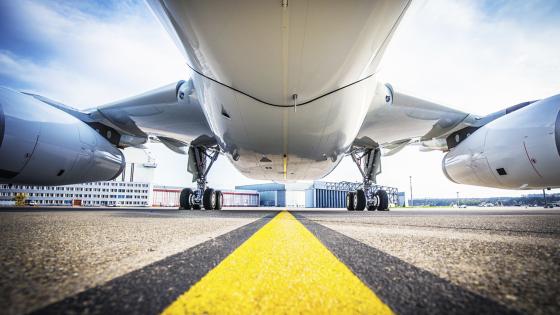For airport leaders, conflict can be a familiar feeling. While it’s impossible to list all the issues airports face, it’s worth highlighting a few recent ‘conflicts’. These range from disagreements with economic regulators, investigations into the performance and effectiveness of operational staff within airports, navigating the impact of continued delays and cancellations, and spats with airline operators over capital expenditure and low emission targets.
If conflict feels constant, the response to it should be the same. Our research into resilience across all transport modes found that airports are responding to this call: 72% believe that true resilience needs to be an ‘always-on imperative during good times and bad’. And almost half (44%) say they will be investing in resilience through 2024 and 2025, especially in technology, processes, and leadership. Encouragingly, aviation is more likely to be investing in resilience than any other mode.
Yet while airport leaders recognise the importance of uplifting and embedding resilience, putting this into action is a struggle. Eighty per cent of airport leaders view resilience as a challenge rather than an opportunity, compared to 69% of airline leaders.

Kata Cserep, global head of aviation, PA Consulting
There are three key areas of focus that can uplift and embed resilience across aviation:
1 Prioritising people
One airport leader told us that resilience “should be handled as a process, because crisis is a process”. While disruption may once have been more predictable, linear, and isolated, today’s disruption is more likely to be chaotic, crooked, and complicated by several events happening in parallel.
In this environment, rule followers are no longer enough. Yet just over one quarter (28%) of airport leaders agreed that resilience requires a breadth and depth of skills – compared to 46% of airline leaders. More encouragingly, 44% of airport leaders say they’ve learned there is a need for a ‘crisis-as-usual’ mindset. This should permeate across all people – with a focus on adaptability and the ability to flex and juggle depending on the disruption of the moment. Without this, people working in stressful conditions focus on short-term, individual survival.
In a world where disruption isn’t entirely binary, the response must be equally fluid. By equipping people to navigate cross-cutting, complex challenges, this dual focus on process and people can take resilience to the next level.

James Healey, aviation strategy expert, PA Consulting
2 Embracing differences
Airports and airlines are compelled to be close but often feel distant. It’s no wonder, given the differences around ownership models, financial models, differing incentives, and the types of disruption that affect each party. Yet it doesn’t have to be this way.
Too often, carriers and airports have completely different punctuality targets and priorities. For example, an airline might extend its minimum connection time at an airport, but this will impact the airport as fewer people may decide to connect there. When it comes to ground handlers, airports face the dilemma of not being in control of airlines pushing for lowest-cost workers – and then managing the reputational damage when squeezed suppliers do not have the capacity to respond to disruption.
If airlines and airports were to work together on these issues as well as others, we might see greater recognition of the complementary ambitions. Rather than a mindset of forced friendship, there is a chance to improve the experience for everyone through some simple actions. Airports could set more clearly defined service-level agreements (SLAs), with early engagement with airlines. We’ve seen one airport bolster resilience with a targeted reduction in ground handlers, as they had more clients, funds, and resource to cover gaps. Most of all, airports should be curious about who’s being engaged across their infrastructure, the conditions they meet, and the impact that has on resilience.

Carriers and airports need to align their punctuality targets and priorities
3 Data as enabler
Another way to improve working with partners, while building airports’ own resilience, is through the improved use of data and technology. Yet when asked to rate their resilience across a range of factors, airport leaders ranked themselves lowest on data and insight.
At Amsterdam Airport Schiphol, runways, gates, and ground space were all constrained – leading to tricky turnarounds, unnecessary delays, and a recurring blame game. Furthermore, there was no single source of data across all airlines or ground service providers. So, leaders used cameras and AI to analyse over 180,000 turnarounds, comprising 85 terabytes of data and more than one billion images. The process – Deep Turnaround – is now helping gate planners, ground handlers, air traffic control, and interested airlines to improve. This approach has reduced last-minute gate changes by 25%, delivered better optimisation of assets and personnel, and helped airlines with more efficient aircraft use and better on-time performance.
Even if such actions are spearheaded – and initially paid for – by the airport, the appetite for this data and insight quickly becomes of interest to a wider community due to its impartial facts. Thus airports will become intelligent enterprises, where data is being used not only to protect value but to create it.
While these steps are in no way an antidote to disruption, they can better prepare airport leaders for the future. With stakeholders prepared to positively respond to flux, with a different mindset to collaboration, and with sharper use of data and technology, airports can move from a permanent state of conflict to being poised for possibility.

Airport operators face a range of conflicts, from scheduling issues to staffing problems
